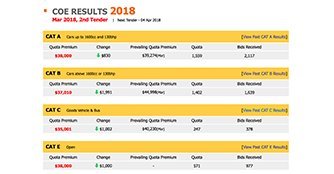Although money is definitely not the be-all and end-all, it’s certainly important enough in our modern capitalistic world. From reporting to a cubicle at 9am from 25 years old to the decision of the number of kids, it’s all largely influenced by money. Not surprisingly, financial freedom is the holy grail for most of us.

If only money comes raining down on us, huh?
In fact, achieving the option of not having to work to pay the bills is so alluring that many fall for scams that promise huge returns within a short time. Example:
“Organic fertilisers are the in-thing. I only eat the best baby spinach, asparagus, scallops, lobsters and wagyu beef and I am full of crap. Yeah, I crap at least 6 times a day and they sell for a lot, like tens of thousands. Invest in ME & get 50% returns within 6 months!
But what if I told you that only 4 relatively simple (but maybe not easy) steps are needed for you to achieve financial freedom before 45. Just 20 years of grinding out at the office and at age 45, you’re probably still young and mobile enough to do whatever you want.
Here’s how:
1. Earn an (maybe slightly above) average salary
For one reason or another, this could be the hardest step for some.
Instead of starting off with a lower base and then projecting with annual increments, I am assuming an average annual package of $60,000 per year in present dollars. If you think I am expecting too much, let’s just say that over 20 years, you’re just earning a total of $1.2 million.

This shouldn’t take more than 20 years, really…
Dividing it over 14 months, this is just slightly above $4,200 a month. Of course, if you earn more, things will get easier for you to save up that $600,000 over the 20 years.
Yes, save $30,000 each year. And if you’re wondering how on earth you can save 50% of your income in a year, it’s really all about making some smart choices with big-ticket expenses, as you will see in the next 2 section.
2. Stay in a HDB flat
A HDB flat should not set you back by much more than $500,000. Purchasing a BTO makes that easier although for resale flats, that isn’t too difficult too given the amount of grants one can take advantage of these days.

Tell yourself that HDBs are the best…
Consider some trade-offs here. If you want to stay in somewhere more central, choose a smaller flat. If space is important to you, just stay close to an MRT station in the outskirts of Singapore.
When you stay in a HDB flat, your surroundings will be constantly spruced up by the government through upgrading programmes. Your corridors are swept everyday, washed monthly and your waste is cleared daily all at a very low fee.
Purchasing a similarly-sized condo in the same location would easily cost $1 million. There is always a temptation to upgrade when your career and salary takes off but if financial freedom is important to you, resist that temptation.
Assuming you’re buying the property with your spouse, choosing a HDB over a condominium would help you save $250,000 immediately. Taking into account the mortgage and interest, it should easily add up to $300,000 per pax
3. Go Carless
Cars serve the function of a wealth tax in Singapore.

Tax, tax and more taxes…
Having done further research after this article, I think that after amortizing the downpayment over 10 years, there’s little doubt that it costs $20,000 to maintain a car for a year. 2 cars over 20 years and that’s $400,000 of hard-earned money.
Of course, it’s hard to put a value to the convenience of a car in Singapore. Even yours truly is tempted. But if I am struggling to save $30,000 in a year and want to achieve financial freedom before 45, I need to take a step back and evaluate the benefits of that car.
Even if two people are sharing the car, choosing the alternative of public transport and the occasional cab should result in an additional $150,000 of savings over 2 decades.
4. Invest for 5% yield
I know, I know. The savings from staying in a HDB flat and not owning a car doesn’t quite add up to $600,000. But honestly, I think the odds are high. At the very least, you should come very very close.
Investing in a basket of high-yield and defensive blue chips like SPH, Singpost, STE Engineering, banks and telcos coupled with even higher-yielding REITs and business trusts should enable one to comfortably achieve a “sustainable” 5% dividend yield.
That’s $30,000 of dividend income and $2,500 of cashflow a month. If your other half repeated the entire process, that’s $5,000 of cashflow a month. More than 80% of households would be able to lead a comfortable lifestyle on that amount of money.
I am confident mine can.
As I have said earlier, these steps are relatively simple, especially 2,3 & 4. Just don’t ever step into a condo or car showroom and learn how to save and invest through the long haul.
But that doesn’t mean it’s easy. Try telling an alcoholic to stay away from beers. Property and cars are also essentially status symbols in Singapore and it’s emotionally and psychologically hard to “not upgrade” or worse, “downgrade”.
Of course, you could be enjoying your work and don’t see the point of taking the steps above to achieve financial freedom before 45. Then again, if that’s the case, why are you reading this blog?
If property and cars are important, the alternative could also be semi-retirement or a 15/25 hour work week after achieving financial freedom at 45. The income earned then should help to fund a condo, a car or some exotic holidays.
It all depends on how hungry you are to get to Rome…
Hi My15HWW,
Those 4 steps are a sensible and useful way to achieve financial freedom before 45. I find lifestyle inflation to be such a problem the longer we work. It’s almost like the time spent in the office is proportional to the amount spent outside the office. It gets more and more tempting to spend on stuff to reward ourselves for working hard. Takes a lot of discipline not to do it!
Cheers,
TFS
Hi TFS,
Thanks for your kind comments.
I have experienced this before. The temptation to have a cup of Starbucks, dine at restaurants every night is so strong when I was miserable at work.
Hope you find some success if you intend to rein in the expenses.
I am hungry to get to Rome. How?
Hi MSR,
Practice the 4 steps? Especially the first one? =p
15HWW,
I must apologize.
Reading your post headline, I thought to myself, “Oh no! Not 15HWW? Has he gone over to the writing crappy listicle dark side?”
Nooooooooo!
Phew! Headline a bit click-bait, but content and meat of article quality stuffs 😉
Excellent counter-balance to those who peddle “magic stones” so we can achieve financial freedom by 35?
Is age 45 very old?
LOL!
Hi SMOL,
To be honest, we have to give credit to authors of listicles. Not easy to write leh…
How can I say that 45 is very old in front of you? LOL
With re-employment age extended from 65 to 67 will make retiring by 45 very young. LOL!
Hi CW8888,
Re-employment age is an option. At the same time, FI by 45 doesn’t mean retire at 45 right?
I would like to add one more simple step which is no less important, i.e. be prudent with your daily living expenses. This includes avoiding expensive habits such as buying designer labels, eating at fancy upmarket restaurants and taking taxis. As far as possible, cook your own simple and healthy meals. This step will not only make you more healthy financially but physically as well. In the long term, it could result in further savings in medical expenses too.
Hi Victor,
You are right! But honestly, unless one is really dining out often at fancy restaurants and going on holidays to exotic countries every month, the things you mentioned are really “small wins”, especially compared to cars and condos.
I own a Braun Buffel wallet and dine at Tung Lok occasionally. Not considered extravagant right? =)
I guess the ‘secret’ lies in starting with #4 as early as possible. And ‘possible’ means here with the first paycheck.
Waiting too long to start investing takes away the biggest asset we have as a beginning investor: time.
Markets rise and fall over shorter periods, but in the long run, picking investments that will steadily climb in value produces the wealth that will help us reach all our financial goals.
Starting early, staying patient and avoiding painful financial mistakes will do the trick.
Hi Tacomob,
Yes, one can start really early, beginning from the teens when one receives part-time income even.
The longer I stay in this game, the more I realise it’s our psyche rather than any knowledge and technique that determines our investment outcome.